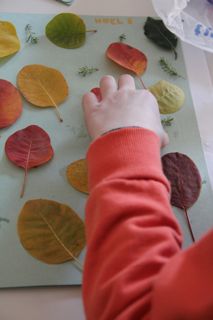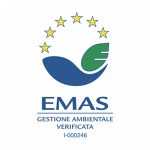Karstic education

The educational branch of Miramare Marine Protected Area (MPA) was born over thirty years ago under WWF Italy management. WWF Italy is designated by the Ministry of the Environment as the MPA Management Body and is validated by the Ministry of Education, University and Research for environmental education practice.
Since Miramare MPA is also the core of the only MAB UNESCO Biosphere Reserve in the province of Trieste, a network of collaborations has been developed with the surrounding territories. In particular, fruitful collaborations are carried out with Duino Cliffs Regional Nature Reserve and Val Rosandra Regional Nature Reserve, two protected areas that offer valuable insights into the karstic and marine-coastal natural environment.
 The educational activities described below are developed in the framework of these collaborations, and are carried out by WWF staff mainly within the protected areas’ borders. These are unique sites where Nature is still free and intact and visitors, adults and children alike, feel as hosts in a very exclusive place. Indoor activities are carried out in the Reserves’ Visitor Centres and in the WWF learning centre located in San Giovanni di Duino.
The educational activities described below are developed in the framework of these collaborations, and are carried out by WWF staff mainly within the protected areas’ borders. These are unique sites where Nature is still free and intact and visitors, adults and children alike, feel as hosts in a very exclusive place. Indoor activities are carried out in the Reserves’ Visitor Centres and in the WWF learning centre located in San Giovanni di Duino.
A Fabulous Reserve
Animals and plants are the big stars of fabulous adventures that draw children closer to the natural world in a playful way, so that they can discover it and understand the importance of protecting it while having fun. Together with frogs, foxes and hedgehogs, children participate in an interactive fairy tale with moments of animation, and discover relevant aspects of local natural environments and intriguing curiosities on the lifestyle of creatures living in them.
Duration: approximately 1 hour and 30’. Where: indoors.
Target: nursery school and first two years of primary school.
Our first steps into Nature
A safe and easy nature trail leads children into the natural environment, letting them hear the sounds of nature and discover forms and colours of plants in their different seasonal expressions, thus including flowers, fruits and seeds. Walking silently and with a curious eye, we can observe animal tracks and discover insects and amphibians living in streams. While moving along dolines, woods, karstic lands and cultivated areas of the Kras, children will learn to recognize plants and animals using easy-to-read spotting sheets and magnifying lenses.
Duration: approximately 1 hour and 30’. Where: outdoors.
Target: last year of nursery school and first two years of primary school.
Who’s done it?
An unusual open-air activity focused on the observation and recognition of domestic and wild animal droppings. This is a far from obvious topic that allows us to determine an organism’s feeding habits also reflecting on its life requirements. During the activity children will also find out how droppings were used in men’s daily life in the past: as a building material, as a fuel, and even… as a raw material to make coffee.
Duration: approximately 3 hours. Where: outdoors.
Target: primary school.
My friend is a bat
An animated reading of stories starring young bats engaged in the exploration of their life environment is the key to draw children closer to these little flying mammals, which are extremely useful but still poorly known and wrongly feared. During the laboratory, listening and debate activities are alternated with moments of individual creativity, and the lab ends with a simulation game to learn how bats can feed in the night hours, using ultrasounds for orientation in space.
Duration: approximately 1 hour and 30’. Where: indoors.
Target: primary school.
The Karst phenomenon
The goal of this educational activity is to find out the origins of Kras and to understand how air and water, over thousands of years, have molded both surface and underground features of this unique landscape. After a brief introduction to familiarize with terms and concepts, the activity foresees a walk in the karstic landscape to observe the main surface and underground features scattered throughout the territory of the province of Trieste.
Duration: approximately 3 hours. Where: indoors and outdoors.
Target: lower and upper secondary school.
Aliens among us
Black locust, tree of Heaven, ragweed, groundsel – to name just a few of the “alien” plant species that are silently colonizing our territories. Indeed, we can call this a silent invasion but it is surely not a peaceful one, since these new species modify the local biodiversity and enter in competition with indigenous species. After a brief introduction, students will be involved in a simulation of field work where they are called to identify invasive species and monitor their presence and distribution using geolocation tools. Animal “aliens” such as the grey squirrel, the coypu and the red swamp crayfish will also be mentioned, and this will open a debate on whether the diffusion of these species should be contrasted or not.
Duration: approximately 3 hours. Where: indoors and outdoors.
Target: lower and upper secondary school.
Timavo: on a mythical quest for a river in-between science and history
A short educational tour introduces students to the mysteries of Timavo river, especially focusing on its final stretch from the resurgences in San Giovanni di Duino to the mouth in Villaggio del Pescatore (about 1 km apart from each other). During the walk, students will observe animals and plants associated to the various habitats and will classify them using magnifying lenses and spotting sheets. In addition, the variety of man-made territorial features will give the opportunity to talk about ancient and modern history.
Duration: approximately 2 hours and 30’. Where: indoors and outdoors.
Target: lower and upper secondary school.
Chemical and physical parameters of freshwater
During this laboratory students will collect freshwater samples from karstic ponds and streams and will analyze them to obtain a qualitative and quantitative assessment of the main chemical-physical parameters of water, such as pH, nitrites, nitrates, dissolved oxygen, temperature, etc. Once data collection and elaboration is completed, the results will be put in perspective (are the values in their normal range or are there signs of perturbation, possibly due to the effects of pollution?), also discussing the ecological role of surface freshwater in the local territory, and the use and consumption of freshwater in the past and at present. This open-air lab is carried out in small groups using field measurement tools and data collection sheets.
Duration: approximately 1 hour and 30’ minutes. Where: outdoors.
Target: lower and upper secondary school.
Val Rosandra: 60 millions of birthdays
During this activity students go back along the geological history of the only river valley located in Trieste area, Val Rosandra, which is a world-renowned geological site whose origins trace back to 60 million years ago. This valley has a complex geological structure, and in a few hectares we can find rocks made of flysch, marl and limestone, as well as a variety of peculiar elements, such as caves, faults, waterfalls, gorges, warps, detrital deposits and springs. After a brief introduction to familiarize with terms and concepts, students will go in the field and learn to identify the different rock types and the geomorphological features that witness the long history of this valley.
Duration: approximately 3 hours. Where: indoors and outdoors.
Target: upper secondary school.
COSTS
Educational activity of one and a half hours
5€
Half-day educational activity
10€
Full-day educational activity
15€
Costs are given per person. Accompanying teachers do not pay.


